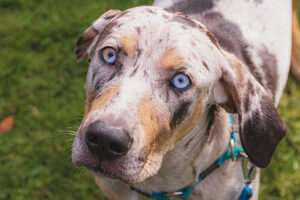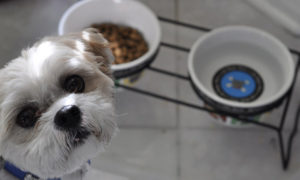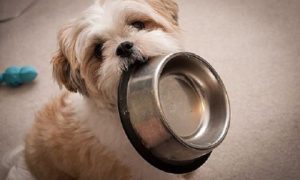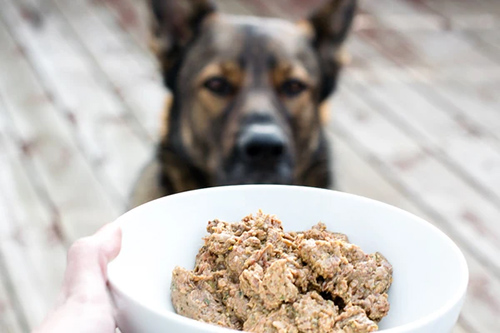
Are you familiar with BARF (Bones and Raw Food diet for dogs) or (Biologically Appropriate Raw Food)? This diet is the creation of Dr. Ian Billinghurst, and it consists of various homemade or natural foods that include raw meat. If you are not familiar with this diet, I will attempt to enlighten you and get into raw dog food pros and cons.
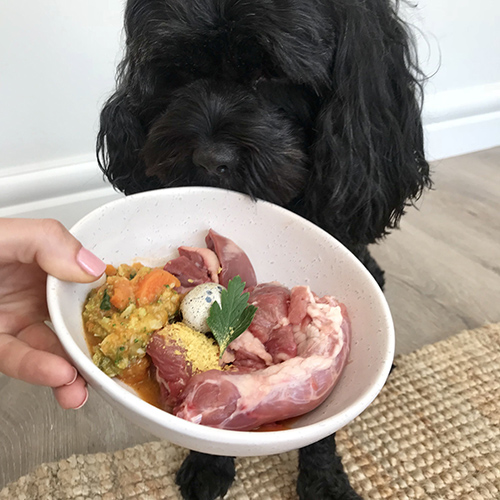
Like most dog parents today, I am aware of how popular this feeding plan is with many dog owners, and I always try to keep up with the many arguments for and against all diets. Currently, I am not aware of any canine diet study comparing the health benefits of a raw food diet for dogs and commercial dog food in a significant population of healthy dogs that are unbiased.
Unfortunately, this lack of information is upsetting. As consumers and dog parents, we need detailed information to determine whether a raw food diet for dogs is healthier than a commercial diet. However, in my opinion, for the average dog and owner, the potential benefits of a raw food diet for dogs far outweigh the drawbacks.
For dog parents who are not familiar with these types of feeding plans, here are four variations: (Please note that the descriptions should not be used to create a balanced diet for your dog; they are merely an overview of their advocates’ approaches.)
- BARF: This raw food diet for dogs was created by an Australian veterinarian named Dr. Ian Billinghurst. It is sixty percent raw, meaty bones and forty percent a changing variety of vegetables, meat, fruit, yogurt, eggs, and organ meat.
- Ultimate Diet: This raw food diet for dogs plan for was developed by a certified clinical nutritionist named Kymythy R. Schultze. The diet consists of raw bones, vegetables, raw meat, vegetables, and nutritional supplements such as kelp, vitamin C, and essential fatty acids). Also, Schultz believes that all dogs should stay away from dairy products and grains.
- Volhard Natural Diet: This raw food diet for dogs plan was created by a well-known author and trainer named Wendy Volhard. She believes that breakfast should consist of millet, rice, oats, buckwheat, yogurt, and kefir. Furthermore, dinner should consist of vitamin and mineral supplements, raw liver, raw meat, herbs, and fruit. Additionally, you can give your dog bones at least twice weekly as a treat. Volhard suggests that you pour boiling water over fish and raw poultry to kill any bacteria before feeding them to your dogs.
- Pitcairn’s Natural Diets: This natural raw food diet for dogs was developed by an American veterinarian named Dr. Richard H. Pitcairn. He promotes feeding dogs from a wide variety of foods, and he provides plenty of fabulous recipes in his book (Dr. Pitcairn’s Complete Guide to Natural Health for Dogs and Cats.) Many of the ingredients he employs in his book include raw milk, vitamin and mineral supplements, vegetable oil, raw and cooked vegetables, cottage cheese, yogurt, raw eggs, and raw meat.
Pros of the Raw Food Diet for Dogs
According to research, people who eat a wide variety of fruits and vegetables instead of taking vitamin and mineral supplements are better off.However, dogs also benefit from getting their vitamins and minerals from all whole natural foods. Although your dog is getting crucial nutrients from its food, always remember that you will still need to provide them with some form of supplementation to make sure that they are not deficient in any essential nutrients.
Dogs on these diets obtain plenty of nutrients from various foods rather than from the unvarying ingredients in a commercial diet. A homemade natural diet may provide a wider variety of nutrients than a commercial dog food does. However, keep in mind that if the raw food diet for dog recipes is based on the same six ingredients week-in and week-out, it is not varied.
Cons of The Raw Dog Food Diet for Dogs
The creation of a complete and balanced nutritious raw diet is not easy. Dog parents need to follow formulas created by nutritionists carefully. Studies show that the minimum and maximum levels of nutrients required for a dog to stay healthy have already been established. These levels include specific amino acids, protein in general, essential fatty acids and fat, and various vitamins and minerals. Commercial dog foods are prepared to provide the correct amounts of nutrients. For instance, feeding your dog raw beef bones, apples, carrots, rice, and raw chicken wings daily will not provide your dog with suitable levels of all these nutrients.
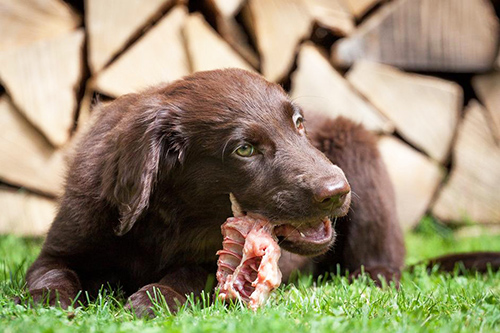
Raw meat and bones have the potential to make you and your dog sick. When you consider the meteoric rise in popularity of the raw food diet for dogs and cats, in 2004, the FDA published guidelines addressing the health risks of such diets for animals and their owners. The main problem is the dangers of viruses, parasites, and bacteria transmitted by handling and consuming raw meat and bones.
According to the FDA, only meats and bones that are USDA certified safe for human consumption should be used. Raw meat and poultry need separating from other foods, which helps to prevent cross-contamination. Hands, bowls, countertops, utensils, and cutting boards should be washed thoroughly using soap and warm water after contacting raw meat or poultry. Frozen meat, including commercially prepared raw diets, needs to be kept frozen until ready to be utilized and then thawed in a refrigerator or microwave.
Also, the FDA notes that many commercially prepared raw diets are not complete and balanced and should be fed on an occasional basis only or as a supplement to your dog’s food that meets the standards of the AAFCO.
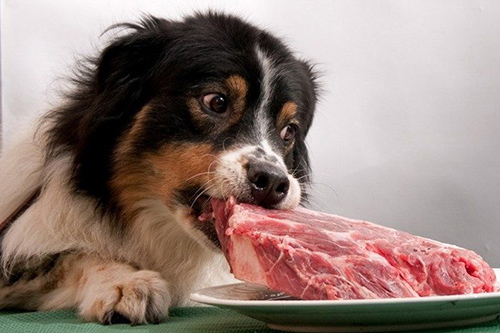
All puppies have complex and unique nutritional needs. For instance, if you were to overfeed your puppy with foods high in calcium and vitamin D, you risk exposing her to hip dysplasia. On the other hand, if you feed your puppy too little, you leave her wide open to rickets (deformed and soft bones). Therefore, all homemade diets of any kind are not recommended for puppies.
Some dogs can get sick when there are too many changes to their diet. Many dogs suffer from gas, diarrhea, and vomiting whenever they are introduced to new foods, while other dogs experience the same symptoms when they eat a particular food. The foods that trigger the issues are individual—some dogs are okay with beans, while others get vehemently gassy and uncomfortable when they consume them. Only time will tell if a dog gets accustomed to problematic foods.
Too much or too few specific vitamins and minerals can make your dog sick. Deficiencies of the following nutrients are known to cause illnesses:
- Fractures and bone deformities due to lack of calcium and vitamin D
- Poor wound healing and scaly skin due to lack of zinc
- Muscle weakness and eye diseases due to lack of vitamin A
Also, too much can cause the following illnesses:
- Joint and bone problems due to excesses of calcium
- Weight loss, calcium overload in the blood, and diarrhea due to excess vitamin D
- Bone deformity and loss of appetite due to excess vitamin A
- Inadequate to no absorption of calcium due to excess zinc

